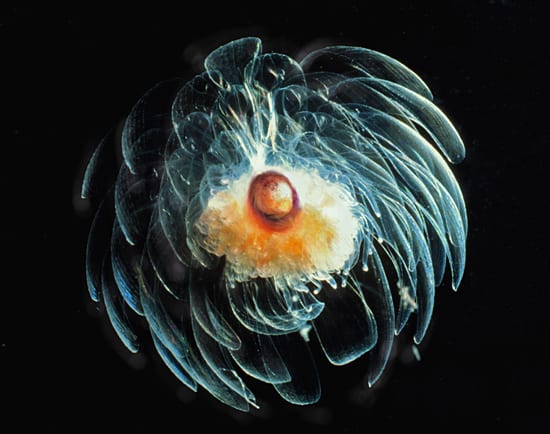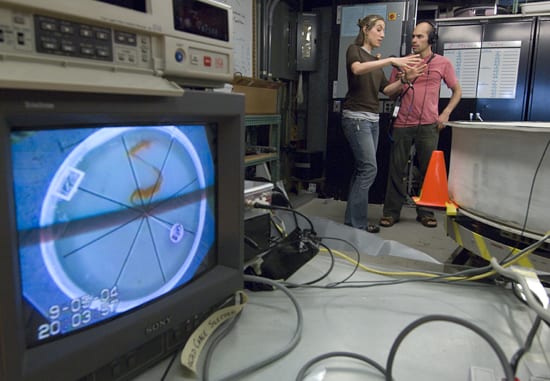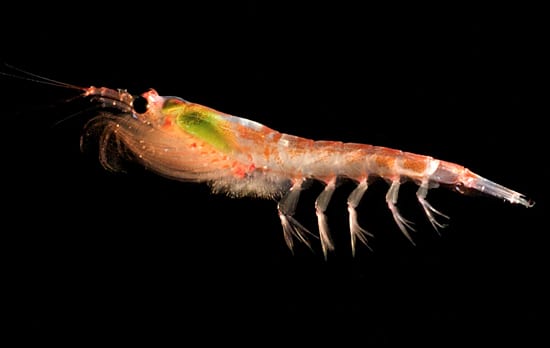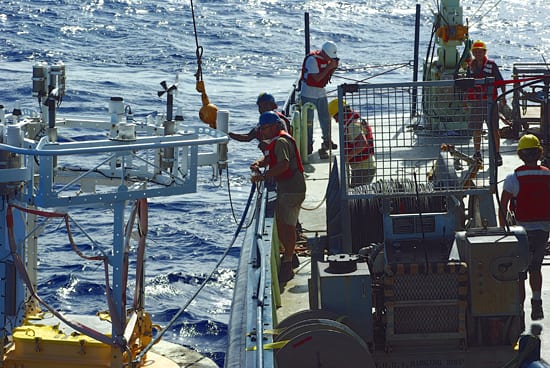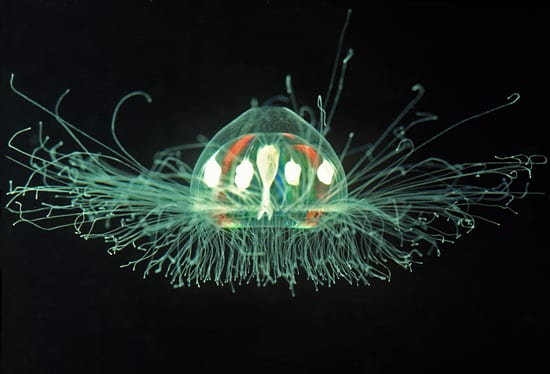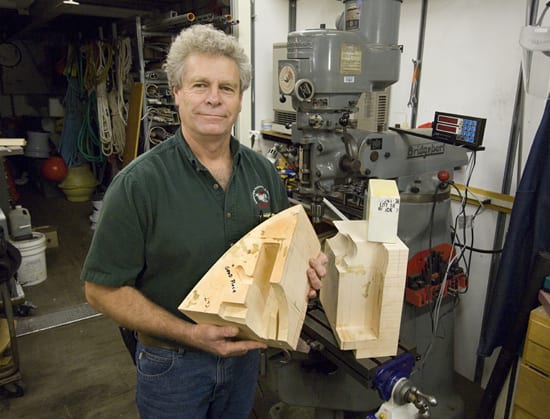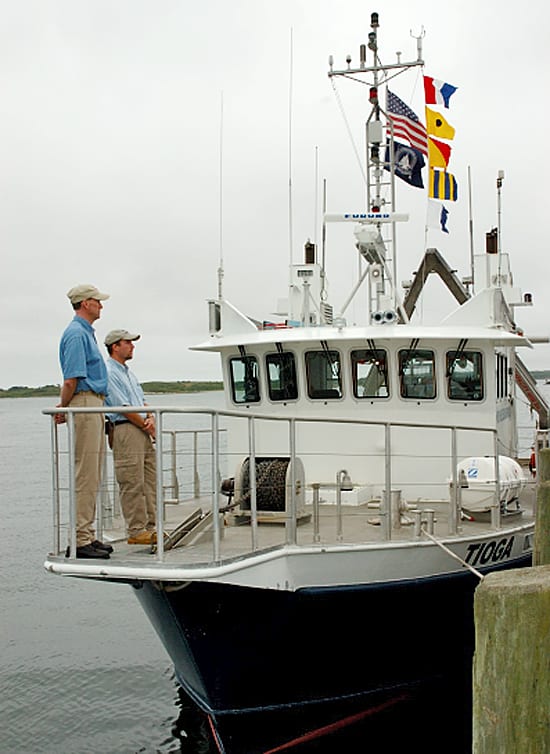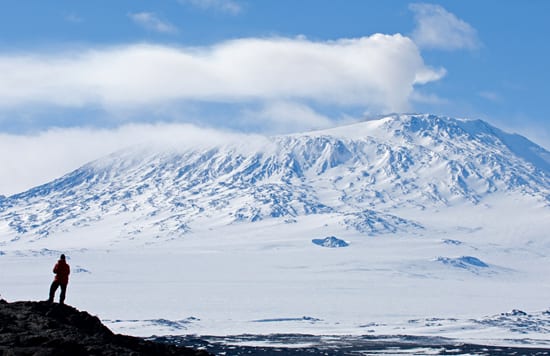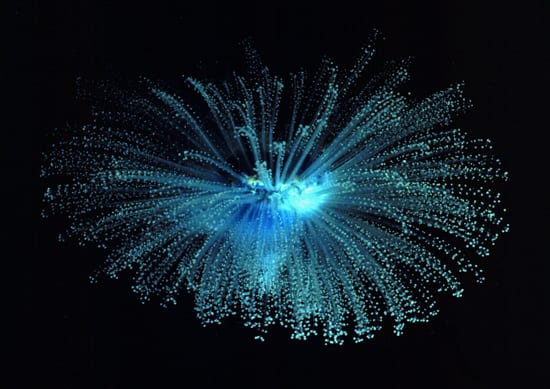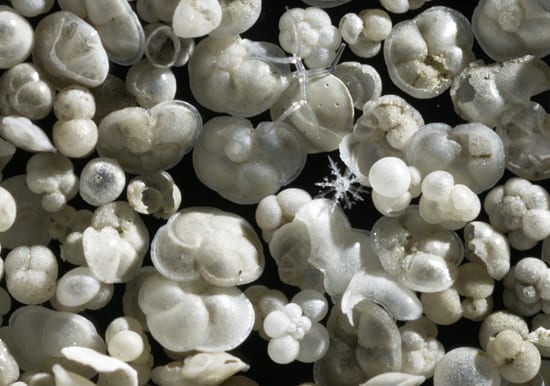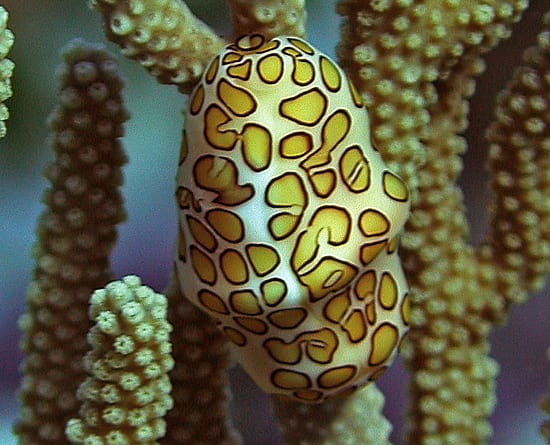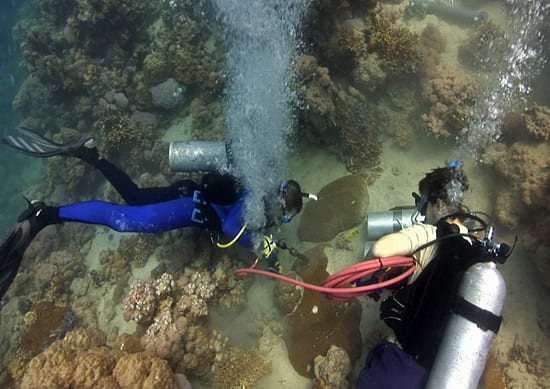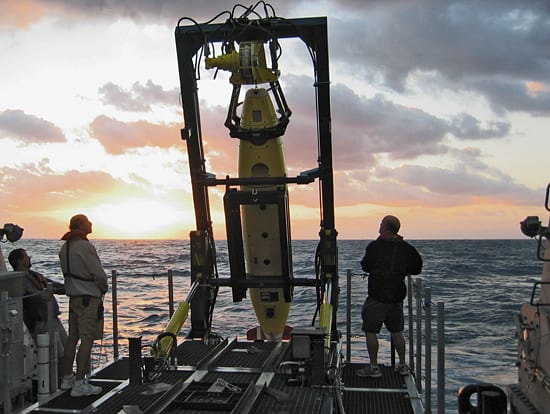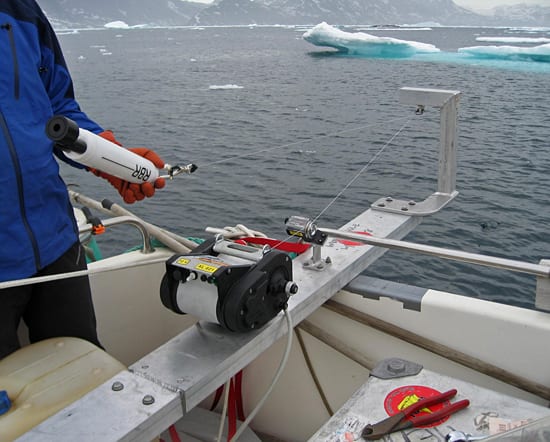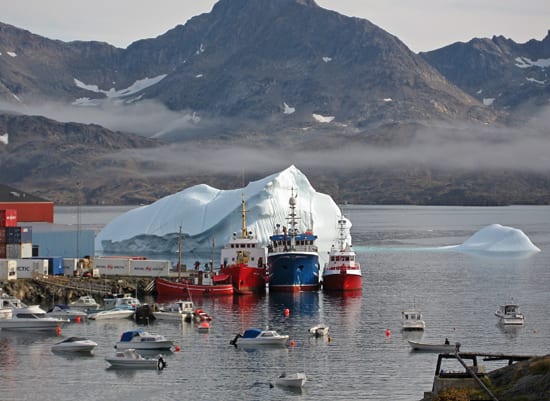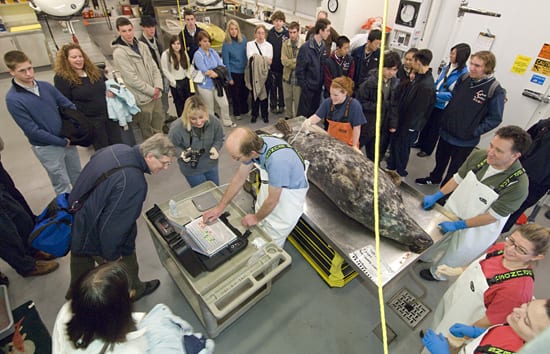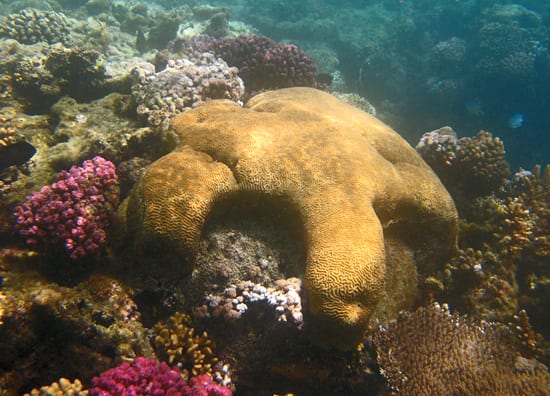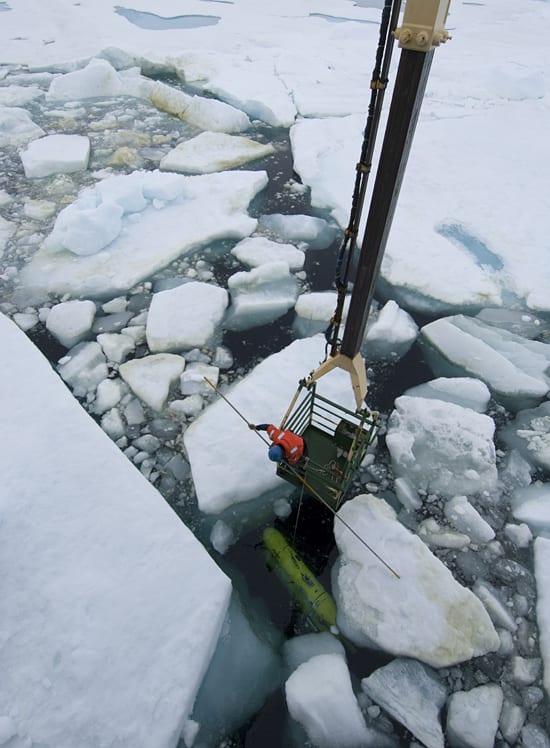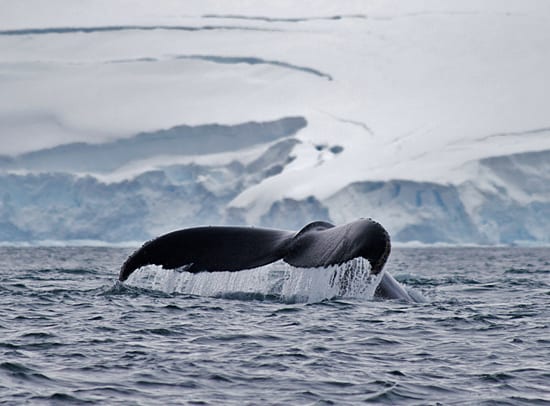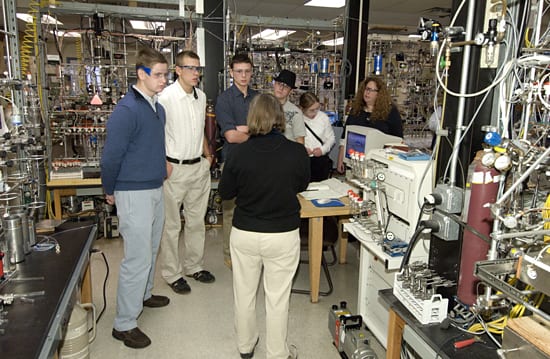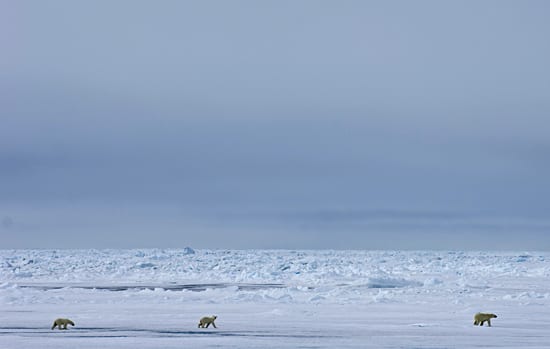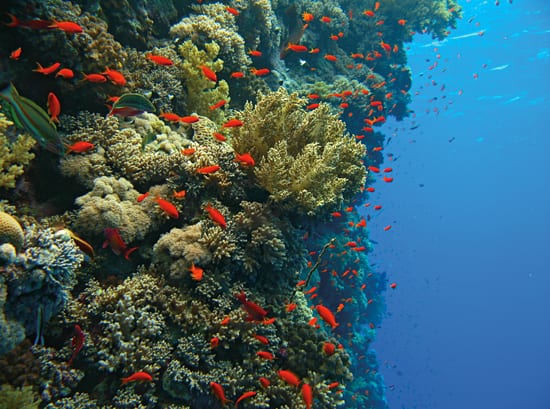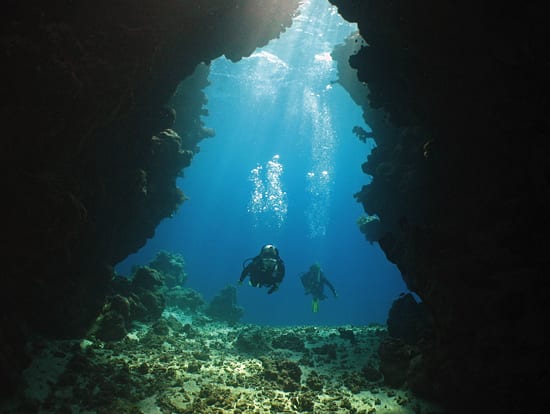Multimedia Items
Flower of the deep
The deep ocean is home to hundreds of species with soft, jelly-like tissues. Many of these gelatinous animals are transparent, and many are beautiful. Siphonophores, such as the one pictured,…
Read MoreLaboratory and studio
MIT/WHOI Joint Program student Stephanie Waterman was interviewed about her research for an audio slide show produced by Ari Daniel Shapiro, a recent graduate from the Joint Program. Stephanie is…
Read MoreAntarctic krill
WHOI/MIT Joint Program graduate student Andrew McDonnell captured this image of an Antarctic krill during the first of two month-long cruises off of the West Antarctic Peninsula during the Austral…
Read MoreBack on board
Engineers and crew aboard R/V Oceanus work to recover a deep-ocean mooring in the northwest tropical Atlantic in summer 2008. The mooring recovery/deployment cruise, led by physical oceanographer Al Plueddemann,…
Read MoreFragile predator
The jellyfish Crossota alba. Delicate jellyfish such as this thrive in the deep sea, where no wind, waves, or turbulence threaten to tear them apart, and are successful predators in…
Read MoreFoam, it’s not just for cups
WHOI engineer Rod Catanach shows off foam used to keep several deep sea vehicles buoyant, including Alvin and Nereus. It’s a durable, light-weight material; engineers use syntactic foam, a matrix of billions of…
Read MoreFront row vessel
Captain Ken Houtler and mate Ian Hanley stand on the bow of their vessel, the R/V Tioga, for a good view of the dockside press conference about WHOI’s role in…
Read MoreSnowy volcano
WHOI researcher and photographer Chris Linder gazes at 12,400-foot Mt. Erebus in Antarctica. This was a calm day at Cape Royds, during an expedition in 2007, “though as you can…
Read MoreBlue rays
Is it fireworks, a flower, or a 1970’s fiber-optics lamp? None of the above!—it’s a colonial ocean animal related to jellyfish, called Porpita porpita. The colony has radiating blue “tentacles”—really…
Read MoreShells reveal the past
Seafloor sediments are full of tiny, lovely shells of single-celled ocean organisms that lived, died, and sank to the ocean bottom, building up in layers over the ages. The fossil…
Read MoreBeautiful but destructive
A Flamingo Tongue snail crawls over soft corals in the Caribbean. In an “arms race” over evolutionary time, the corals developed toxins that deter predators, but the snail evolved a…
Read MoreDrilling in the deep
WHOI post-doctoral researcher Neal Cantin (left) and MIT/WHOI Joint Program student Casey Saenger (right) collect tissue samples from a Diploastrea coral near a Red Sea cement plant. Cantin and other…
Read MoreUP AND AT ‘EM!
Members of the CATALYST ONE expedition team prepare for a sunrise launch in December 2008 of one of two 6,000-meter autonomous underwater vehicles (AUVs), owned by the Waitt Institute for Discovery.…
Read MoreWorking among icebergs
Are warmer ocean waters affecting Greenland’s ice sheet? To find answers, WHOI scientists this fall made use of a local, small vessel able to navigate the iceberg-filled waters of Sermilik…
Read MoreBergs and boats
Icebergs drift into the port of Tasiilaq in Greenland, where WHOI scientists and colleagues from the University of Maine were based this summer while measuring ocean temperatures in nearby Sermilik…
Read MoreA new lab tool for animal research
WHOI Biologist Michael Moore working with the International Fund for Animal Welfare Marine Mammal Rescue and Research Team prepare to examine a gray seal that was found dead in Wellfleet…
Read MoreAn ancient presence
Brain coral colonies can live for hundreds of years, and their skeletons preserve a record of environmental and climate changes throughout their lifetimes. WHOI scientists studying Earth’s past climate can…
Read MoreLost and found
On board the research vessel Oden in 2007, WHOI engineer John Kemp used the ship’s crane-operated metal basket to retrieve a robotic vehicle called Puma. With a long metal pole, Kemp pushed aside…
Read MoreA whale fluke in Antarctica
A humpback whale shows it’s tail, or fluke, off shore from the Unites States Antarctic Program’s Palmer Station, as the R/V L. M. Gould departs for its first oceanographic station…
Read MoreBowlers touring WHOI
High-school students tour the National Ocean Sciences Accelerator Mass Spectrometry Facility (NOSAMS) lab as WHOI research specialist Ann McNichol (center) explains how a carbon sample is extracted from a variety…
Read MoreLunchtime, with bears
Polar Discovery photographer Chris Linder was just about to eat lunch aboard the Swedish research vessel Oden in the Arctic Ocean, when polar bears were sighted and he ran for…
Read MoreThe vertical life
Red Sea coral communities thrive on vertical walls at the reef’s edge, where individual coral colonies compete for access to sunlight and food-carrying currents. The shapes of the colonies change…
Read MoreOn the march
Huge sand dunes aren’t found only in deserts. These massive dunes (note people for scale) are bearing down on a coastal town in equatorial Brazil. WHOI scientist Ilya Buynevich, from…
Read MoreSearching for snapper fish
MIT/WHOI Joint Program graduate student Kelton McMahon (front) and WHOI research assistant Leah Houghton enter a large underwater cavern on a Red Sea coral reef off Alith, Saudi Arabia in…
Read More
